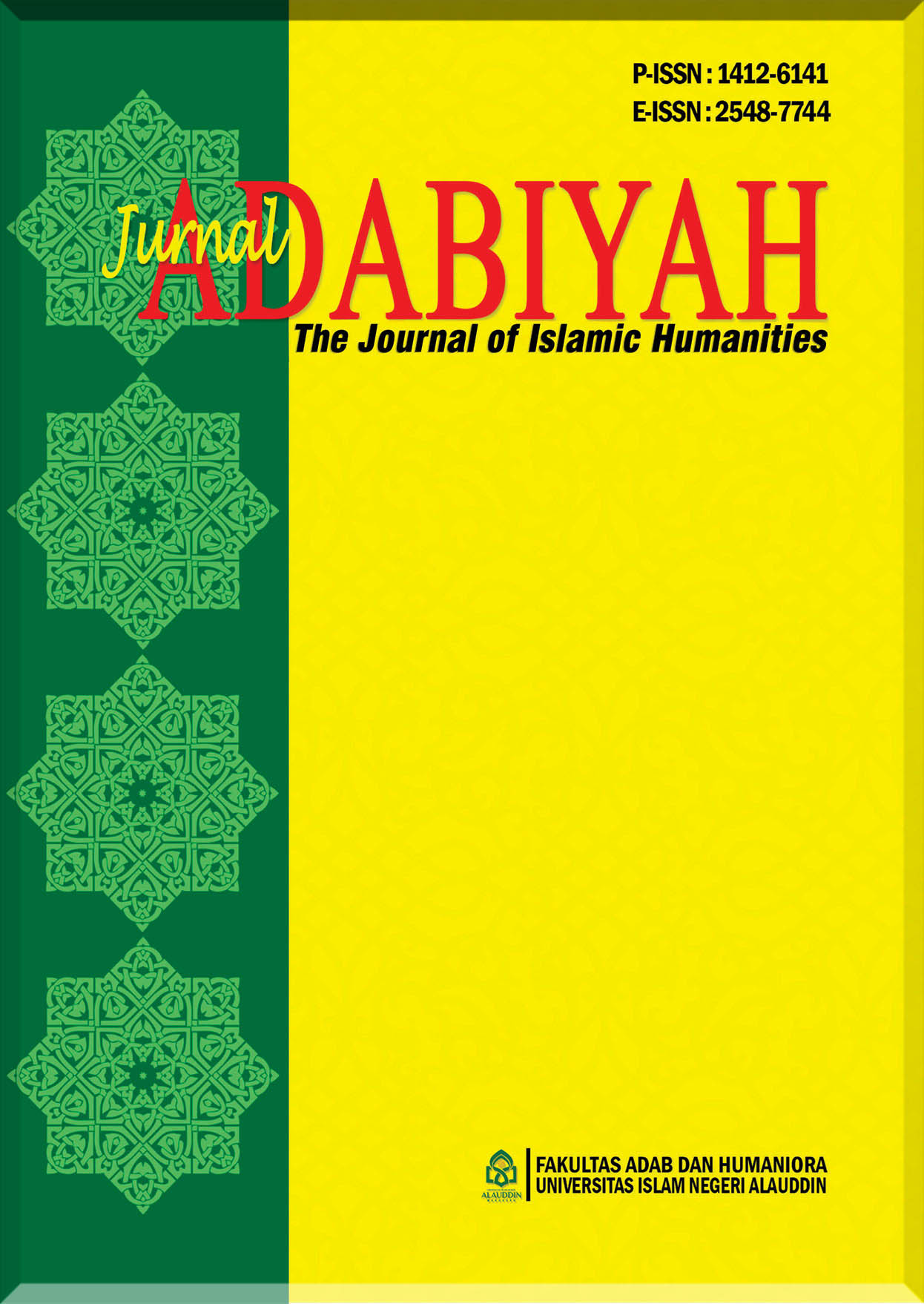الوزير ابن مقلة أحد عمالقة الخطاطين فى العصر العباسى
Main Article Content
Abstract
Peradaban dan kebudayaan Islam mencapai puncak dan keemasannya pada masa-masa pemerintahan Daulah Abbasiyah dalam berbagai bidang. Salah satu bidang kebudayaan yang tak kalah pesatnya pada masa itu ialah berkembangnya seni kaligrafi (al-Khath al-Jamilah). Ada tiga maestro kaligrafer yang paling tersohor pada masa Daulah Abbasiyah, yaitu: Ibnu Muqlah, Ibnu al-Bawwab, dan al-Musta’shimi. Dalam tulisan ini hanya akan diperkenalkan satu di antaranya yaitu Ibnu Muqlah. Ia pernah menjadi perdana menteri pada tiga orang khalifah Abbasiyah: al-Maqtadir billah, al-Kahir billah, dan al-Radhi billah. Dialah peletak pertama kaidah kaligrapi Arab, yang dikembangkan oleh para kaligrafer yang datang kemudian. Kaedah kaligrafi yang diciptakannya dinamai al-khath al-mansub, yaitu tulisan yang sesuai dengan ukuran-ukuran yang tepat.
Downloads
Article Details
COPYRIGHT AND LICENSE STATEMENT
COPYRIGHT
Jurnal Adabiyah is published under the terms of the Creative Commons Attribution license. Authors hold the copyright and retain publishing rights without restriction to their work. Users may read, download, copy, distribute, and print the work in any medium, provided the original work is properly cited.
LICENSE TO PUBLISH
1. License
The use of the article will be governed by the Creative Commons Attribution license as currently displayed on http://creativecommons.org/licenses/by/4.0.
2. Author’s Warranties
The author warrants that the article is original, written by stated author/s, has not been published before, contains no unlawful statements, does not infringe the rights of others, is subject to copyright that is vested exclusively in the author and free of any third party rights, and that any necessary written permissions to quote from other sources have been obtained by the author(s).
3. User Rights
Under the Creative Commons Attribution license, the users are free to download, reuse, reprint, modify, distribute and/or copy the content for any purpose, even commercially, as long as the original authors and source are cited. No permission is required from the authors or the publishers.
4. Co-Authorship
If the article was prepared jointly with other authors, the corresponding author warrants that he/she has been authorized by all co-authors, and agrees to inform his/her co-authors of the terms of this statement.
5. Miscellaneous
Jurnal Adabiyah may conform the article to a style of punctuation, spelling, capitalization, and usage that it deems appropriate. The author acknowledges that the article may be published so that it will be publicly accessible and such access will be free of charge for the readers.
References
البابا، كامل، (1994)، روح الخط العربى،الطبعة الثالثة، بيروت: دار لبنان.
البهنسى، عفيف، (1404 – 1984)، الخط العربى، أصوله، نهضته، انتشاره،الطبعة الأولى، دمشق: دار الفكر،
الجبورى، يحيى وهيب، (1994) الخط والكتابة فى الحضارة العربية، الطبعة الأولى، بيروت – لبنان: دار الغرب الإسلامى.
الرفاعى، بلال عبد الوهاب، ( 1410-1990)، تطور الخط العربى تاريخه وحاضره، الطبعة الأولى، دمشق – بيروت: دار ابن كثير.
حبش، حسن قاسم، (1412- 1992) نفائس الخط العربى، بيروت – لبنان: دار القلم.
ضيف، شوقى (1966)، تاريخ الأدب العربى فى العصر العباسى، الطبعة السادسة عشرة، القاهرة: دار المعارف
ضمرة، إبراهيم، (1404 – 1988) الخط العربى جذوره وتطوره، الطبعة الثالثة، الأردن: مكتبة المنار.

